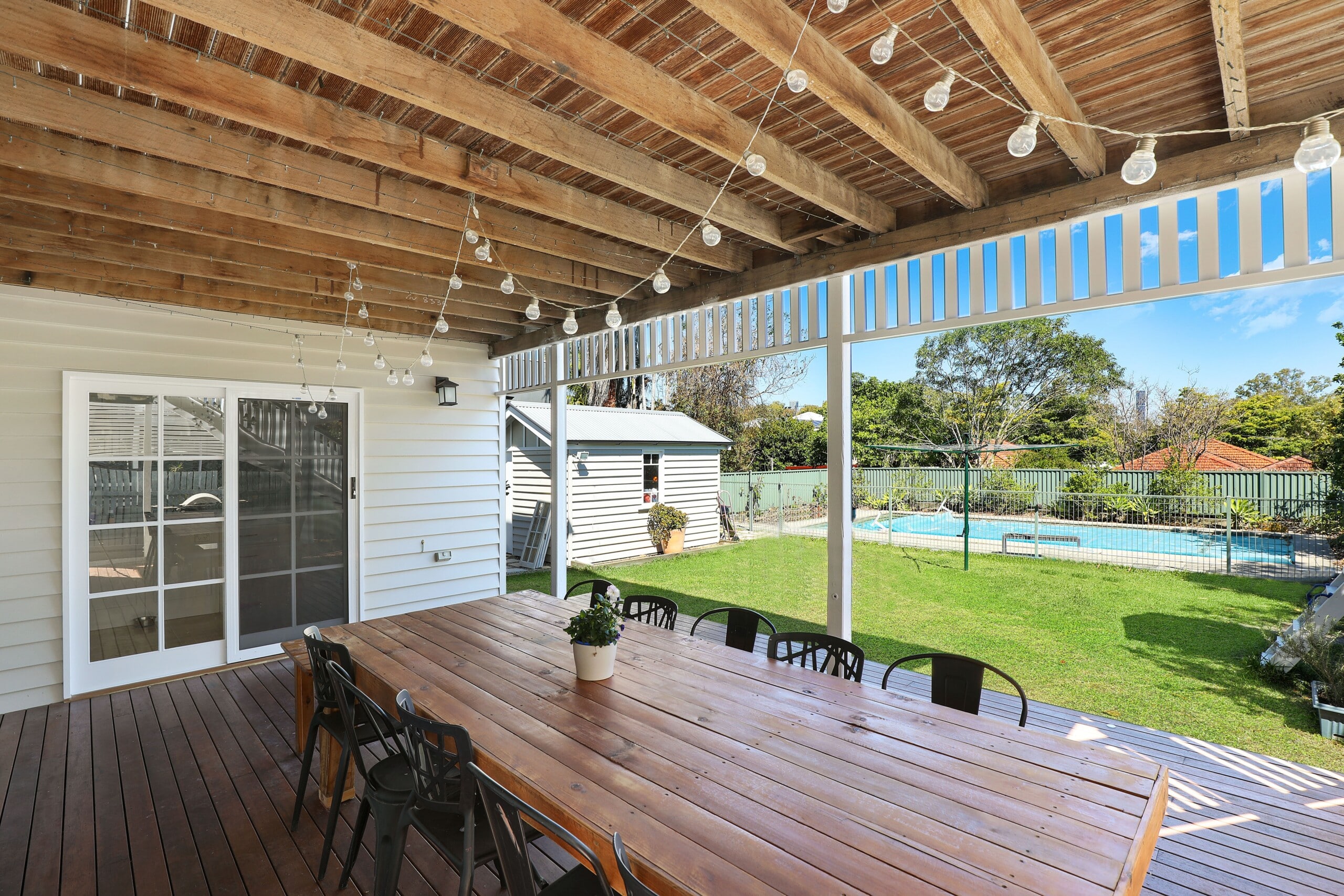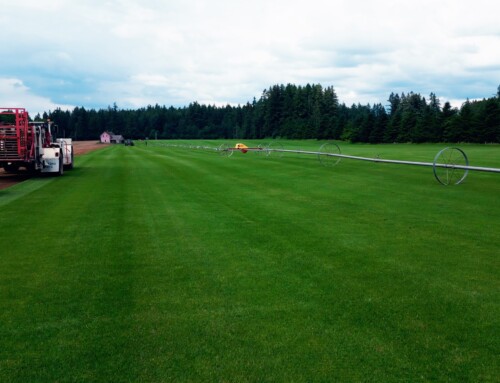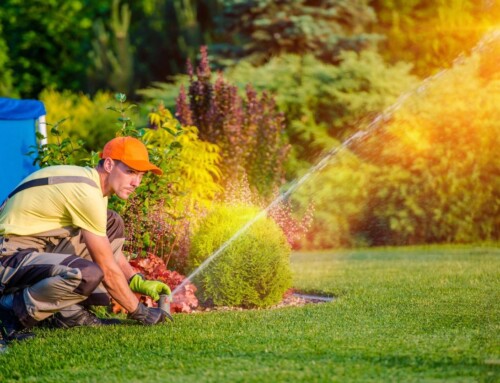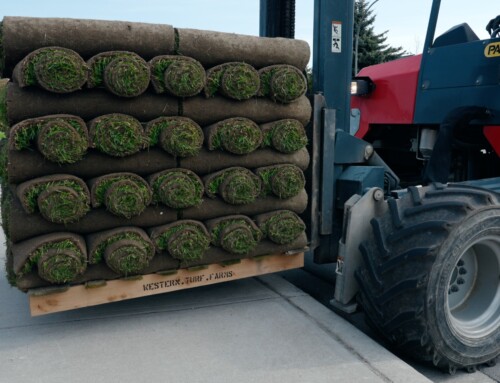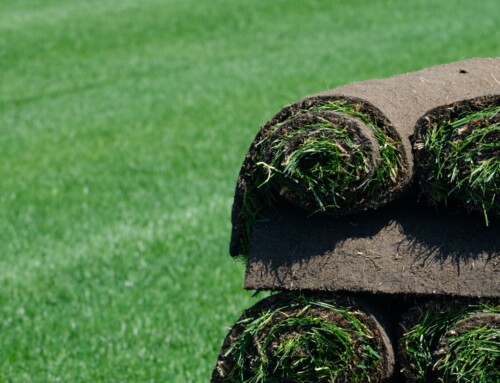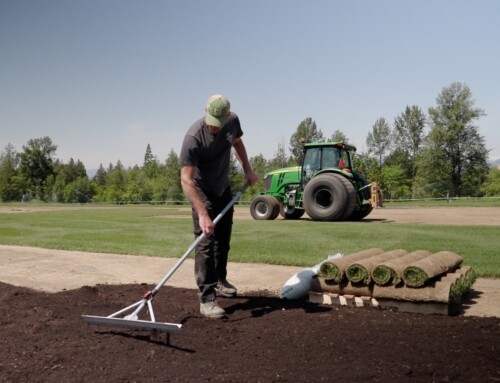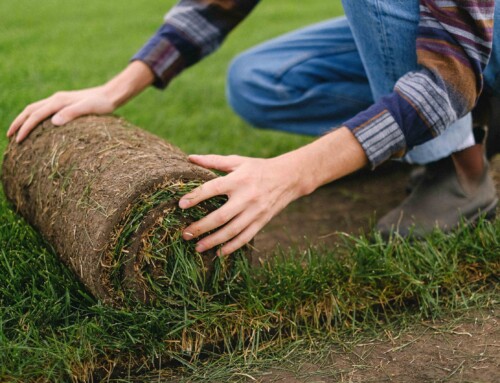With the recent spread of COVID-19, British Columbians and Albertans have been encouraged to continue social distancing and discouraged from gatherings of any size. However, this gives us an opportunity to spend time outside and prepare our lawns and gardens to enjoy in the upcoming months.
After months of lying dormant during the winter months, your lawn – including grass, shrubs and trees requires care before it can become fully lush and green again.
But don’t worry, we’ve got you covered. Today, we’ll be discussing tips and consideration on how you can prepare your lawn and garden for the warmer months ahead.
Spring Lawn Maintenance & Care
Creating the foundation of a nutrient-rich garden and lawn
After the winter months, you may be excited to get the lawn started. However, the soil might have lost most of its nutrients. A beautiful lawn and garden takes nutrient-rich soil and soil with great drainage. You may also find if you haven’t started your lawn before, your soil might have too much clay or sand.
It’s important to prepare your soil before installation by creating a nutrient-rich soil bed. We recommend applying a couple of inches of quality topsoil to improve your existing soil quality. This will help improve the drainage and create a nutrient-rich foundation for your lawn. Another option is to use fertilizer in order for your sod to establish new roots.
Another important factor to consider is pH levels. When soil is too acidic or alkaline, it can interfere with nutrient uptake and prevent healthy sod/grass growth.
These factors are usually dependent on your geographical location as well.
Here at Western Turf Farms, we provide quality topsoil varieties and amenders to improve your soil nutrient quality. These topsoil varieties include ProSoil Turf Topping Soil Blend and UrbanGro Organic Topsoil. The amenders include Hemlock Bark Mulch and Mushroom Compost.
Aerate Your Lawn
If you’re looking at your lawn, you might find dead leaves, shoots, moss, and other naturally-decaying vegetation that has covered what used to be your beautiful green lawn.
Aerating your lawn will give it the opportunity to breathe. To do this in the spring, you can manually aerate it with aeration poles which put holes a few inches into your lawn. Alternatively, you can rent motorized equipment to do this. However, using motorized equipment can be a heavy workout and your lawn might require a longer recovery time.
Overseeding Problem Patches
Overseeding can help patches that have developed over time due to foot or animal traffic. To overseed, Western Turf Farms has overseeding kits available.
If the problem patches are small, you’ll be able to spread the grass seed by hand. However, for bigger patches, you’ll need a lawn spreader or mechanical seeder. This will help insure you are overseeding properly.
Next, you’ll need to use a slow-release nitrogen fertilizer. After approximately 5 weeks, you can add a quick-release nitrogen fertilizer.
These three steps will help create a lush and healthy-looking lawn for the warmer months!
Chafer Beetles
Chafer beetles are invasive species that feed on the roots of turf and plants. This will destroy the roots and ultimately the plants you have at your home.
Signs of infestation include:
- Brown patches on your grass and turf
- Grass feeling “spongy” due to the grubs tunnelling and heavily infesting your lawn
- Your grass and turf will be wilted and dead
- You can easily pull back your grass and turf
- Birds, skunks, and other predators frequently dig up your lawn to search for the grubs
To treat chafer beetles, we recommend using GrubGone!. This is a natural and safe bio-insecticide to control turf grub. The success rate is 90% and can be applied more frequently than nematodes.
Installing a New Lawn
Choosing the right sod variety for a new lawn
If you’re looking to replace or install a new lawn, choosing the right sod variety for your lawn, it is important. Some considerations include: where you located, the climate of the area, and how the sod will be used.
Some of the sod varieties we carry here at Western Turf Farms include:
- Select Sod: This is a blend of Kentucky Bluegrass and Perennial Ryegrass. This soil is recommended for the residents living on the South Coast of BC, Vancouver, Surrey, the Lower Mainland, Vancouver Island, and the Sunshine Coast.
- Supreme Sod: This is a blend of Fescue and Perennial Ryegrass. This is recommended for residents in Vancouver, Surrey, the Lower Mainland, Vancouver Island, Sunshine Coast, BC Interior, and Alberta.
- TWCA-certified Drought Tolerant Sod: The sod blend consists of Perennial Ryegrass, Chewing Fescue and Kentucky Bluegrass. This sod blend is recommended for the Interior and areas that are more prone to droughts.
- Tall Fescue Sod: This sod consists of Tall Fescue grass and is the best defense against chafer beetles. This grass variety is also drought resistant.
- Enviro Organic Sod: Another one of our drought-tolerant blend, this is ideal for environmentally-conscious homeowners. This consists of Kentucky Bluegrass and Fescue. We recommend this for customers in Western Canadian climates, from Vancouver Island to Calgary.
- Bentgrass Sod: This is a premium creeping grass recommended for luxury homes. This requires more watering in dry areas and performs well in growing areas. We recommend this sod for Vancouver, Surrey, the Lower Mainland, Vancouver Island, Sunshine Coast, BC Interior, and Alberta.
How we are responding to COVID-19
Get your lawn started today. To maintain the safety of our employees and customers during the COVID-19 situation, we are taking precautions. We are taking orders and payment over the phone. We are also practicing no-contact delivery. For more information, please read our post.
Get your lawn started today. Contact us for more details!

